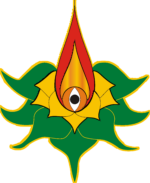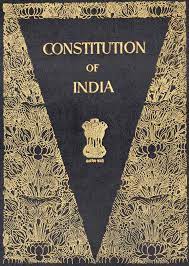The Constitution of India was physically written by a Kayastha, and not typed.
How many Indians know that the Constitution of India was written by hand. No instrument was used to write the whole constitution. Prem Bihari Narayan Rayzada, a resident of Delhi, wrote this huge book, the entire constitution, in italic style with his own hands.
Prem Bihari was a famous calligraphy writer of that time. He was born on 16 December 1901 in the family of a renowned handwriting researcher in Delhi. He lost his parents at a young age. He became a man to his grandfather Ram Prasad Saxena and uncle Chatur Bihari Narayan Saxena. His grandfather Ram Prasad was a calligrapher. He was a scholar of Persian and English. He taught Persian to high-ranking officials of the English government.
Dadu used to teach calligraphy art to Prem Bihari from an early age for beautiful handwriting. After graduating from St. Stephen's College, Delhi, Prem Bihari started practicing calligraphy art learned from his grandfather. Gradually his name began to spread side by side for the beautiful handwriting. When the constitution was ready for printing, the then Prime Minister of India Jawaharlal Nehru summoned Prem Bihari. Nehru wanted to write the constitution in handwritten calligraphy in italic letters instead of in print. That is why he called Prem Bihari. After Prem Bihari approached him, Nehruji asked him to handwrite the constitution in italic style and asked him what fee he would take.
Prem Bihari told Nehruji “Not a single penny. By the grace of God I have all the things and I am quite happy with my life. ” After saying this, he made a request to Nehruji "I have one reservation – that on every page of constitution I will write my name and on the last page I will write my name along with my grandfather's name." Nehruji accepted his request. He was given a house to write this constitution. Sitting there, Premji wrote the manuscript of the entire constitution. 
Before starting writing, Prem Bihari Narayan came to Santiniketan on 29 November 1949 with the then President of India, Shri Rajendra Prasad, at the behest of PM Nehruji. They discussed with the famous painter Nandalal Basu and decided how and with what part of the leaf Prem Bihari would write, Nandalal Basu would decorate the rest of the blank part of the leaf.
Nandalal Bose and some of his students from Santiniketan filled these gaps with impeccable imagery. Mohenjo-daro seals, Ramayana, Mahabharata, Life of Gautam Buddha, Promotion of Buddhism by Emperor Ashoka, Meeting of Vikramaditya, Emperor Akbar and Mughal Empire, Empress Lakshibai, Tipu Sultan, Gandhiji's Movement, Netaji Subhas Chandra Bose and Rupachitra is all reflected in their drawing ornaments. All in all, it is a pictorial representation of the history and geography of India. They painted the pictures very thoughtfully according to the content and paragraphs of the constitution.
Prem Bihari needed 432 pen holders to write the Indian constitution and he used nib number 303. The nibs were brought from England and Czechoslovakia. The nibs will be made there. He wrote the manuscript of the entire constitution for six long months in a room in the Constitution Hall of India. 251 pages of parchment paper had to be used to write the constitution. The weight of the constitution is 3 kg 650 grams. The constitution is 22 inches long and 16 inches wide.
Prem Bihari died on February 17, 1986. The original book of the Indian Constitution is now preserved in the library of the Parliament House, Delhi. Later, a few books were published in print under the supervision of the Survey of India in Dehradun.

